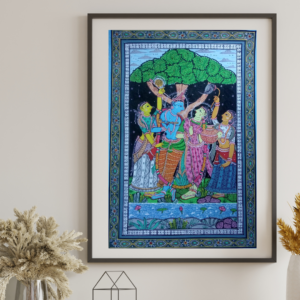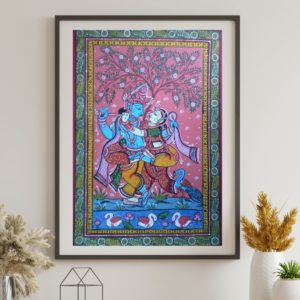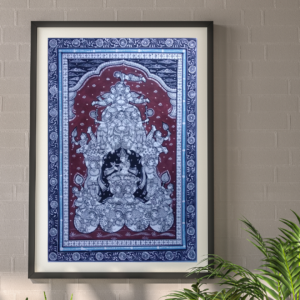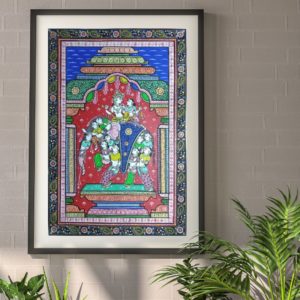Golden Temple, also known as Sri Harmandir Sahib, is a spiritual and cultural marvel located in Amritsar, Punjab, India. It is a place of worship, peace, and unity for Sikhs. And a symbol of religious harmony for people from all walks of life. With its stunning architecture, serene ambiance, and rich history, Golden Temple attracts millions of visitors every year from all over the world. In this post, we will delve into the fascinating details of the Golden Temple.
The Golden Temple’s history, significance, and the reasons why it is considered the most revered Sikh shrine are explored in this post.
The History and Architecture of the Golden Temple
Golden Temple was first built in the 16th century by Guru Arjan, the fifth Guru of Sikhism. They constructed it on a small island in the middle of a man-made lake known as Amrit Sarovar. Which means the pool of nectar. The temple’s foundation stone was laid by a Muslim saint, Hazrat Mian Mir, which symbolizes the unity and brotherhood of different religions in India. A prominent Sikh architect, Baba Gurditta, designed the temple. They constructed it using white marble and gold.
Golden Temple has a unique and stunning architectural style. Which blends the Hindu and Islamic styles with Sikhism’s distinct identity.
The Darbar Sahib or Harmandir Sahib is the main building of the temple.
Is a square-shaped structure with a dome on the top, covered with gold plates. The dome represents the Sikh belief in one God. And the gold plates represent the spiritual richness and purity of Sikhism. The entrance to the temple is through a magnificent archway. They decorated it with intricate carvings and inlaid it with semi-precious stones. The archway leads to a causeway, And it connects the temple with the shore of the lake. The lake is surrounded by a walkway, which is paved with marble and lined with small shrines, where pilgrims can offer their prayers.
The Significance of the Golden Temple
Golden Temple is the most sacred shrine of Sikhism. The Golden Temple is considered the spiritual and cultural heart of the Sikh community. The temple is a symbol of the Sikh belief in the oneness of God and the equality of all human beings. The temple’s open door policy. Where people from all religions and cultures are welcome. This represents the Sikh values of tolerance, brotherhood, and unity.
The temple is also significant because it houses the Guru Granth Sahib, the holy scripture of Sikhism. The Guru Granth Sahib is a collection of hymns, prayers, and teachings, which were written by the Sikh Gurus and other saints. The Sikhs consider the scripture as their eternal Guru and treat it with utmost respect and devotion. They place the scripture on a throne in the main hall of the temple, and the devotees can pay their respects by bowing before it.
The Rituals and Practices at Golden Temple
Golden Temple is a place of worship, and there are certain rituals and practices that the devotees follow. They require the devotees to cover their heads and remove their shoes before entering the temple. They must also wash their hands and feet before entering the main hall. The devotees can offer prayers at different shrines in the temple, these are dedicated to different Sikh Gurus and saints. They can also participate in the Langar, which is a community kitchen that provides free food to all visitors, regardless of their religion or social status.
Volunteers run the Langar, and it is a way to serve humanity and promote equality. The devotees can also participate in the Kar Sewa, which is a voluntary service of cleaning and maintaining the temple’s premises. The Kar Sewa is a way to show devotion and selfless service to the community. The volunteers perform various tasks, such as cleaning the floors, washing the dishes, and preparing the food for the Langar.
The daily routine of the temple starts early in the morning, around 3 am, with the recitation of the Guru Granth Sahib. The devotees can also participate in the Amrit Vela, which is a morning prayer that takes place at dawn. The temple is open to visitors 24/7, and the devotees can visit the temple at any time to offer their prayers.
The Celebrations and Festivals at the Temple
Golden Temple is a place of celebration and festivity They decorate and illuminate the temple with lights on several occasions throughout the year. The most significant festival at Golden Temple is Vaisakhi, which falls on April 13 or 14 every year. Vaisakhi is the harvest festival of Punjab and marks the founding of the Khalsa Panth by Guru Gobind Singh, the tenth Guru of Sikhism.
They decorate the temple with flowers and lights on this day. Throughout the day, there are processions and music performances to experience. They also celebrate Diwali, the festival of lights, They celebrate Diwali, a significant festival at Golden Temple, every year in October or November. On this day, they illuminate the temple with thousands of lights, and there are fireworks and music performances throughout the night.
The Experience of Visiting the Golden Temple
Visiting Golden Temple is a unique and unforgettable experience that fills the heart with peace and spiritual energy. The temple’s serene ambiance, the sound of the recitation of the Guru Granth Sahib, and the aroma of the Langar food create a magical atmosphere that calms the mind and soul.
As visitors walk on the marble walkway surrounding the lake. They can witness the reflection of the Golden Temple in the water, creating a stunning visual effect. The temple’s golden dome glows in the sunlight, and the intricate carvings on the archway and the marble walls leave a lasting impression on the visitors.
The Langar experience is also a unique one. Where visitors can sit on the floor with people from different cultures and religions and share a meal together. The Langar is not only a way of serving food. But also a way of breaking down barriers and promoting unity and brotherhood.
Conclusion
Golden Temple is not just a religious shrine but a symbol of peace, unity, and brotherhood. The temple’s unique architecture, rich history, and cultural significance make it one of the most visited tourist destinations in India. The temple’s open door policy and the Langar’s free food service represent the Sikh values of tolerance and equality.
Visiting Golden Temple is an experience that enriches the soul and leaves a lasting impression on the mind. It is a place where people from all walks of life can come together and offer their prayers, and share a meal. And experience the spiritual and cultural richness of Sikhism. Golden Temple truly stands as a glowing spiritual marvel that inspires and promotes a culture of love, compassion, and unity.
If you liked this post, be sure to check out some of our related posts too!
Mahalaxmi Temple in Mumbai: Cultural Heritage















